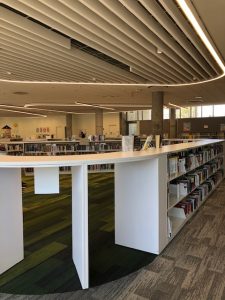 Since many people have felt the ease of COVID restrictions lifting, it’s been interesting for me to take note of what people most cherish being able to do again.
Since many people have felt the ease of COVID restrictions lifting, it’s been interesting for me to take note of what people most cherish being able to do again.
Health clubs, movie theaters, and restaurants have been opening with limited capacity for months now here in Chicago. Until hearing that people have been getting vaccinated, I think, many people held back from frequenting such places.
But, like the coming of spring itself, people are stepping up social activity with cautious optimism.
In a recent phone call with a friend, I listened to the story of his first restaurant meal in thirteen months; grilled salmon and a glass of Sauvignon Blanc. A lifelong bachelor and not into using time at home for culinary experiments, he was so happy to eat fresh food that was served to him.
This week, I visited a library and got a whole new perspective on why a library might be a special destination, and deserving of heart-felt gratitude now that restrictions are lifting.
Not just any library, a good friend and I checked out the Northtown Library, which is among my town’s 79 neighborhood branches. Her brother, who is an architect, asked her to take pictures.
Designed by Perkins and Will and completed less than two years ago, the building itself represents an unusual colocation project. A curvy and colorful, largely transparent ground floor is crowned with forty-four affordable apartments.
Wow. I would never have thought of such a combination, but it makes sense.
The public library is a special convergence of learning opportunities, resource-sharing, and gathering spot.
The Northtown branch features open and inviting spaces for reading and browsing books, for computer research, and for activities – from readings to special interest classes.
Creating affordable, well-designed apartments in a city that usually only caters to people with money is inspiring.
Of course, the library played a big part of my life during more restricted months of the pandemic. Hours at my local branch were reduced, but online searches allowed me to review descriptions of titles, reserve books, and pick them up. When I was done with a selection, I could drop it off outside the entrance, all without direct personal contact.
I was really happy at the idea of branches increasing their hours and event calendars. Being in a library is like being in church without anyone preaching at you.
The library represents a place that respects quiet time. The library is forgiving (the practice of fining people for overdue borrowing has been abandoned, at least during COVID restricted times), and the institution is a great example of egalitarian living, of democracy.
At a library, we all have to follow the same rules.
Besides, reading a library book is free. Using a computer is free. Going to a lecture or asking for a librarian’s guidance on exploring a topic is free. I don’t have to buy anything to sit and read.
Last year, I read The Library Book by Susan Orlean, a frequent NY Times writer and author of The Orchid Thief. It was about the 1986 fire at LA’s central library. Part crime investigation and part psychological treatment of arsonists, it also highlights the special function of a public library in a society.
As I wandered along the undulating shelves of Northtown, I looked at the labels in the Young Adult section. They pointed out the presence of books in Russian, Gujarati, and Urdu — stocked deliberately to meet the needs of a very diverse neighborhood. I smiled.
Knowing that there is a place where people happily share resources is no small thing.


Leave a comment